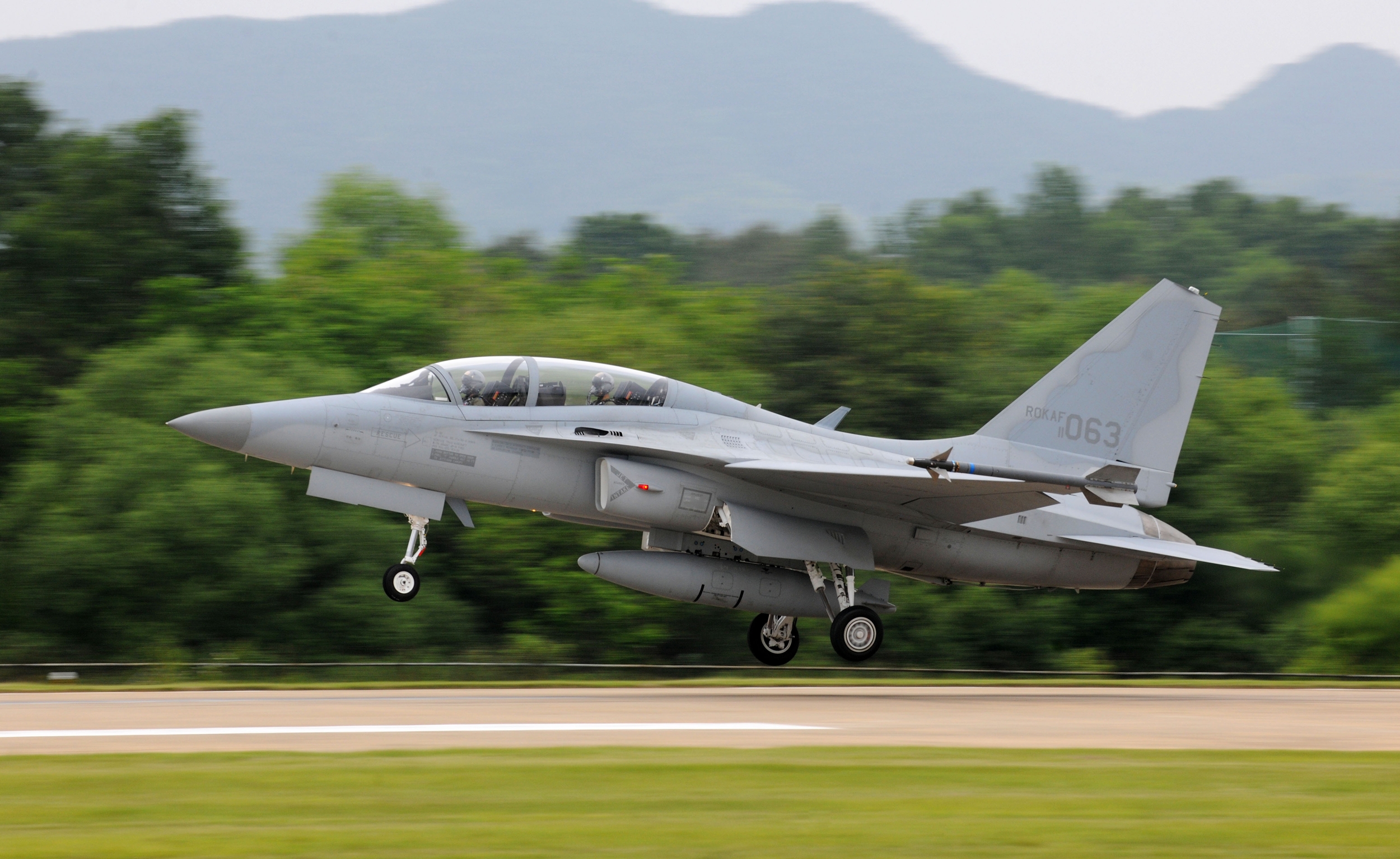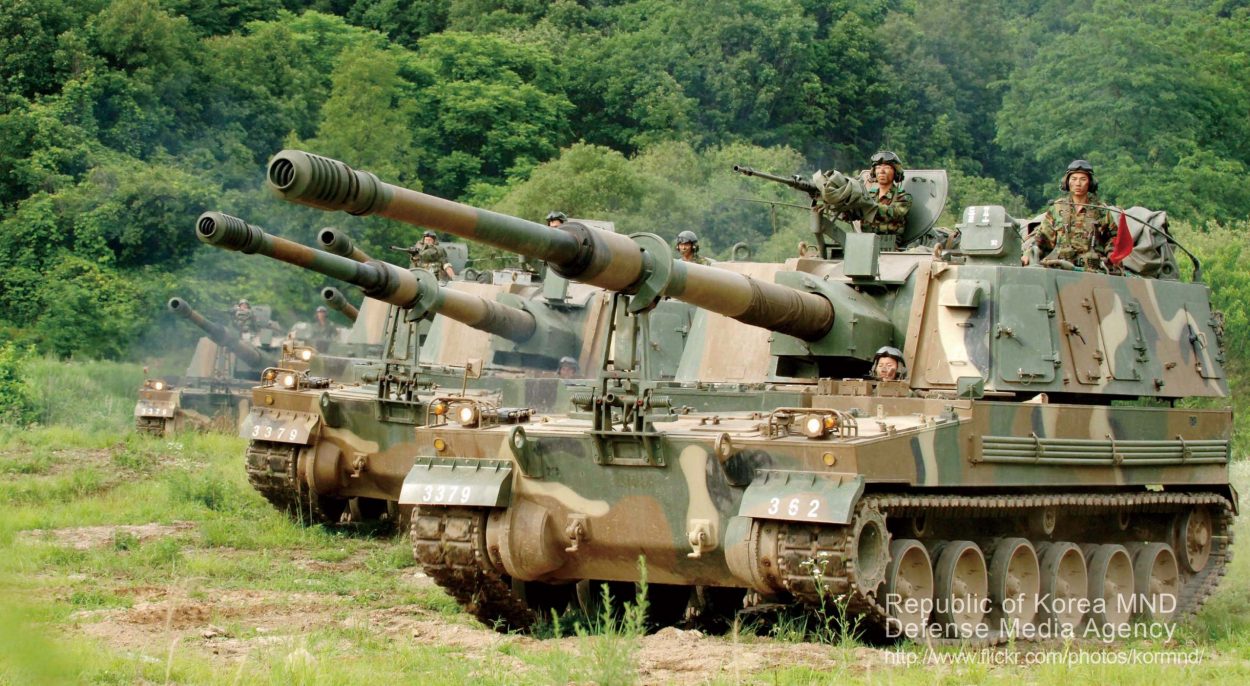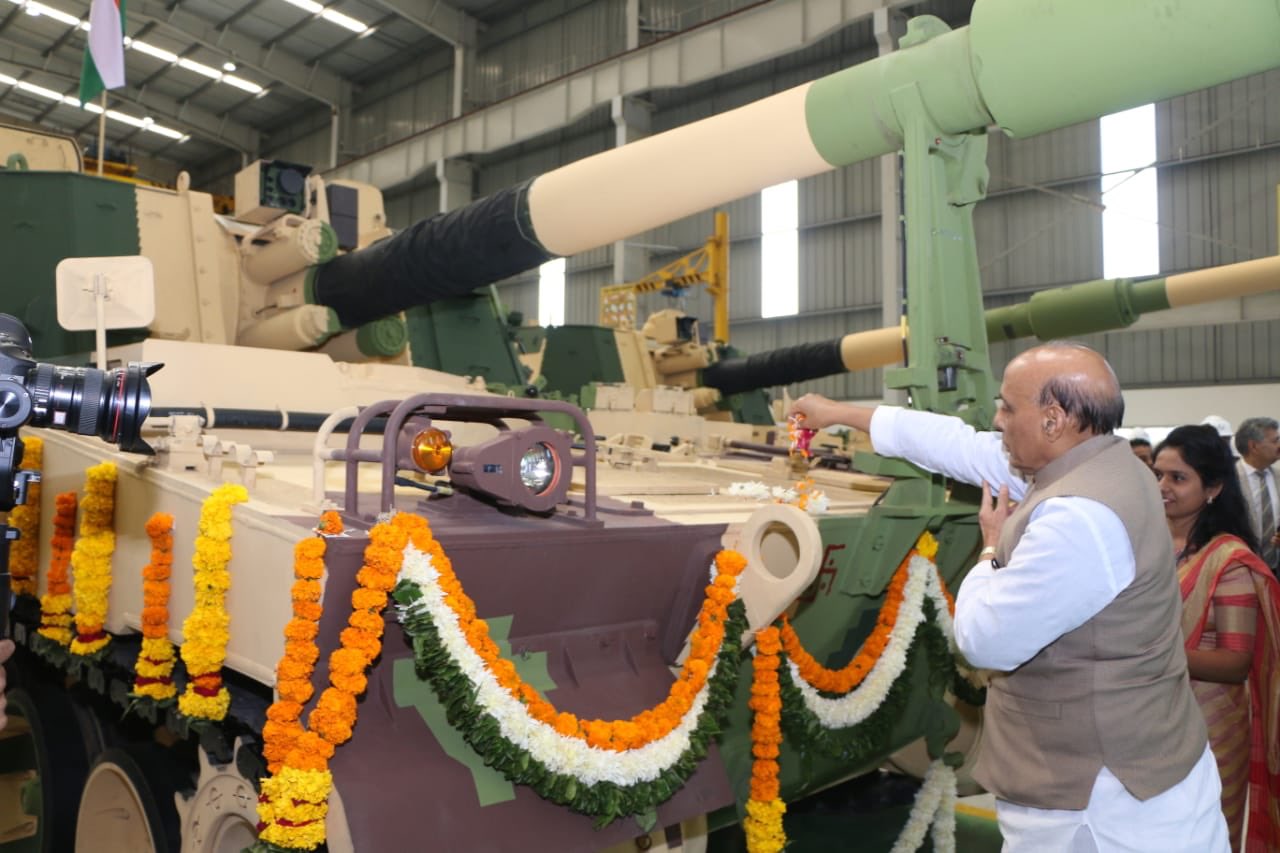South Korea is fast rising on the ladder of the global arms trade. The Export-Import Bank of Korea reports that the country has tripled its arms export in the past two years.
Russia Says ‘Deadly Combo’ Of Igla & Verba Defense Systems Hunted Nearly 33% Of Ukrainian Fighter Jets
China Says J-20 Stealth Fighters Are Now Deployed In All Five Theatre Commands Amid Multiple Front Challenge
The country’s defense exports are expected to reach $10 billion by the end of 2022, nearly triple the figure from 2020. Arms exports by South Korea were 210% higher in 2016–20 than in 2011–15, giving it a 2.7% share of global arms exports.
Reports suggest that the South Korean defense industry’s ability to produce various military systems suiting unique security challenges facing each potential buyer has propelled the country’s defense exports growth.
Before pitching its defense products to any country, South Korea conducts a thorough analysis of the buyers’ security challenges, finances, and industrial makeup, based on which it adjusts its sales pitches as required.
This means Seoul may suggest joint arms production with a local player or offer to sell second-hand equipment at a cheaper rate.
Volume & Range Of South Korea’s Arms Export
In July, South Korea made a significant foray into European markets by entering into a framework agreement on defense cooperation with Poland, stipulating the purchase of three FA-50 squadrons, K2 tanks, and over 600 K9 howitzers.
This was a massive victory for South Korea, as the country has been making concerted efforts in recent years to export the FA-50 to various countries, Poland being the latest.

The countries that have bought F-50s from South Korea include the Philippines and Iraq. The aircraft was first seen in action during the Battle of Marawi in the Philippines when it was used against terrorists affiliated with the Islamic State.
There is also a trainer variant of the fighter jet called the T-50 Golden Eagle advanced training jet, which has been sold to Indonesia and Thailand.
Also, Colombia’s Air Force has reportedly selected a mix of TA-50 and FA-50 aircraft as part of a $600 million acquisition program to replace its retired Cessna A-37B Dragonfly twin-engine light-attack fleet jets.
Besides, the F-50 is also competing with India’s Light Combat Aircraft (LCA) Tejas Mk1A made by Hindustan Aeronautics Limited (HAL) for the contract of 36 light fighter aircraft for the Royal Malaysian Air Force (RMAF).
K9 Thunder
The K9 Thunder is considered one of the world’s most advanced self-propelled 155-millimeter howitzer, which has been exported to some of the major military powers worldwide, such as Australia, Turkey, India, Egypt, Poland, Finland, Norway, and Estonia.

Likewise, even the Hyundai Rotem K2 (Black Panther) is regarded as one of the world’s finest main battle tanks (MBT). It competes with Germany’s Leopard 2A7 to replace the Norwegian Army’s aging fleet of Leopard 2A4 MBTs.
Apart from that, Egypt is also negotiating with South Korea to co-produce the K2 Black Panther battle tank.
In January, South Korea inked a deal with the United Arab Emirates to export the Cheongung II midrange surface-to-air missiles (M-SAM) system. The deal, valued at around $3.5 billion, was the country’s largest-ever arms export deal in history.
:quality(70)/cloudfront-us-east-1.images.arcpublishing.com/archetype/J56DBGHT7RBRPMLTM3SO34FLCY.jpg)
Furthermore, the country is developing its first homegrown fighter jet, the KF-21 Boramae, to be produced jointly with Indonesia.
Seoul has grown its arms export not only in terms of volume but also in terms of range.
Asia’s Top Arms Manufacturer
Korea was under Japanese occupation during World War II and fought alongside the Axis powers in the war.
After the war ended, similar to the partition of Germany after the Axis surrender, Korea was also partitioned along the 38th Parallel (a reference to latitude 38° North) – with the northern half being administered by the Soviet Union and the southern half being administered by the United States.
However, unlike Germany, the Korean peninsula could not be reunited because of the Cold War politics of North vs. South.
The South Korean military was ill-equipped compared to North Korea, which enjoyed a numerical advantage coupled with significant support from China and the Soviet Union.
This proved devastating for South Korea during the Korean War from 1950-53, as the country was pushed on the verge of defeat until US-led forces intervened.
Despite this, South Korea did not take measures to build its defense industrial base because of its security partnership with the US and because it was more focused on developing its economy after the war.
However, in 1968, North Korean commandos attacked the presidential mansion in Seoul and came dangerously close to assassinating South Korean President Park Chung-hee.
Also, only a year after this incident, former US President Richard Nixon announced the “Guam Doctrine,” which stated that the US would no longer get involved in the conflict in Asia and appealed to its allies in Asia not to depend on the US and to maintain its security.
These two events changed the course of the Republic of Korea (ROK), steering it toward becoming the fastest-growing arms exporter in Asia.
Humble Beginnings
Until the mid-1960s, the ROK was completely reliant on the military aid and equipment provided by the US. The country did not have an industrial structure to support large-scale defense industrialization.
So, the Park Chung-hee administration decided to begin with the production of ammunition and small arms, which itself was undertaken with the help of US technical data packages and manufacturing license agreements.
After that, the South Korean government set up a heavy-chemical industry, particularly for defense, and selected various other industries from sectors such as machinery, electronics, and shipbuilding to participate in the defense industry’s production process.
The chosen industries were already established conglomerates engaged in civil production. They were required to engage in defense production and dedicate 70% of their industrial capacity to defense manufacturing.
The government also set up an ‘Agency for Defense Development (ADD) to promote Research & Development (R&D) as part of the industrialization process. The state was expected to conduct R&D, and the industries engaged in production activities.
Nevertheless, throughout the 1970s and 1980s, South Korea’s defense production was based on American technology, either through licensed production or reverse engineering.
It was not until the early 1990s that the focus of the South Korean defense industry began to shift toward improving defense R&D. Together with that, the government also implemented offset policies in procurements from abroad which led to significant enhancements to the country’s technological sophistication.
This way, South Korea eventually managed to develop and produce capital-intensive weapons systems that are now at par with those made by the US.
All the major present-day Korean-produced military equipment, including the T/FA-50 jet aircraft, the K2 Main Battle Tank (MBT), and the K9 self-propelled howitzer, are developed indigenously to a large extent.
Another important feature of South Korea’s defense industrialization drive was the support to the industry from the government through various initiatives and policies primarily introduced in the 1990s, such as the emphasis on procurement of domestically developed and manufactured products.
Also, the selected defense contractors are entitled to certain benefits and subsidies. The government guarantees that once a contract is awarded, it will procure the goods after they are manufactured and assembled.
Lessons For India
In recent years, relations between India and South Korea have undergone significant improvements, mainly because of the unity between India’s Act East Policy and South Korea’s New Southern Policy (NSP) in 2017, based on the commonalities in the respective countries’ vision for the Indo-Pacific order.
This improvement of bilateral ties also includes increased cooperation between the two countries in the defense sector.
In November 2019, the Indian Army introduced the K9 VAJRA-T 155mm/52, a self-propelled caterpillar howitzer derived from South Korea’s K9 self-propelled howitzer.

In February 2020, both countries finalized the “roadmap for defense industry cooperation,” under which India committed itself to ease regulations on South Korean defense firms in India.
The countries also set up a task force for implementing the agreement, which has begun exploring military systems and equipment to be produced in India with the participation of the South Korean defense industry.
As India looks to become “Atmanirbhar” (self-reliant) in defense production, it could draw some lessons from the success of the South Korean defense industry.
India must carefully choose what competencies and capabilities it wants to pursue in its domestic industry, relevant to its strategic needs and operational requirements.
One of the most important features of South Korea’s defense industrialization drive was the particular offset policies while procuring arms from foreign companies. In the case of each procurement, the offset requirements are stated upfront in the Request For Proposals (RFPs), which influences the source selection.
While India also has offset policies but according to the CAG reports of the Government of India, they have largely failed in realizing their objectives.
In many cases, foreign vendors have not discharged their offset obligations after initially making various offset commitments to qualify for the main supply contract.
The Indian government must also significantly increase its spending on research and development if it is serious about becoming self-sufficient in arms production.
For about a decade, India’s gross expenditure on R&D (GERD) as a percentage of GDP has remained around 0.7%, which is way below South Korea’s R&D expenditures, which accounted for 4.81% of its GDP as of 2020.
- Contact the author at tanmaykadam700@gmail.com
- Follow EurAsian Times on Google News




